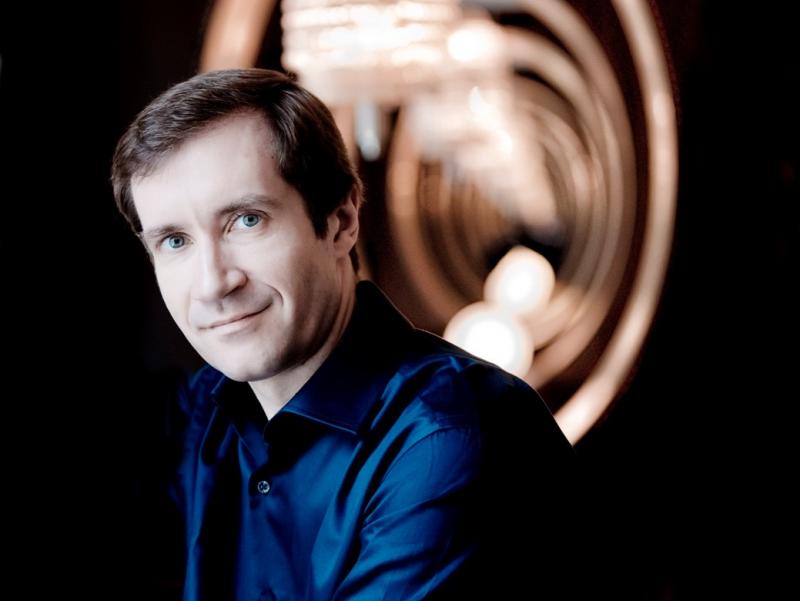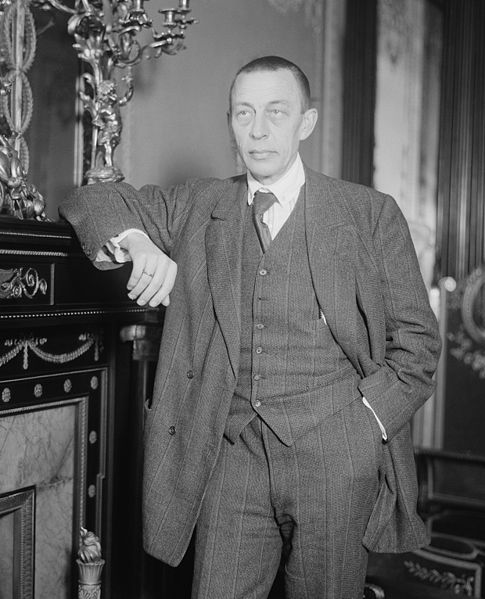Lugansky, Queen Elizabeth Hall | reviews, news & interviews
Lugansky, Queen Elizabeth Hall
Lugansky, Queen Elizabeth Hall
Intellect and heart meet in stunning Rachmaninov, prefaced by sombre Franck and Prokofiev

Am I alone in a readiness to sacrifice all four Rachmaninov piano concertos – though maybe not the Rhapsody on a Theme of Paganini – in favour of the second sets of Preludes and Études-Tableaux? Probably not, after last night, when Nikolay Lugansky unfurled the 13 Op. 32 Preludes as one discombobulating symphonic cosmos. This is probably as close as we can come today to being in the presence of Rachmaninov himself, the greatest recorded pianist I know.
Some find Lugansky cold. Let’s just say that he favours Apollonian control and poise over Dionysian abandon, though not always. And if Apollo usually means the sun, then in the programme’s first half this lyre-bearer sang his songs in the shadows of murky minor keys made limpid and lugubrious laments. Franck’s Prelude, Chorale and Fugue made a colossal, at times forbidding opening, looking forward to the Rachmaninov in the way that Lugansky outlined a real face through the black silk veils of notes. Unusually for Franck, it sounded always pianistic and never organ-like, huge climaxes terraced and just spacious enough.
The first two, sombre movements of Prokofiev’s Fourth Sonata showed a finish that perhaps didn’t allow for the usual atmosphere but even so turned corners and rounded each argument off with a master’s touch. As for the fireworks of the finale, even the great Sviatoslav Richter had trouble with the ultimate splashes. Not so Lugansky, again giving the minutest extra space at times for everything to be heard and powerfully registered.
 Intellect and heart met most fully, though, in the stunning Rachmaninov sequence (the composer pictured right). It might have been kinder on the audience’s power of concentration, though the artist’s never faltered, to have split the Preludes between the two halves. But then every pause, every last sustained note of each number and its relationship to the next made perfect sense; any longer break would have dispelled the rigour of the composer’s connections. Rachmaninov doesn’t simply work in pairs of major and minor keys; the opening C major can be disturbing, while the restless trotting of No. 11 in B major is flanked by similar rhythmic figures. One peak came when Lugansky overwhelmed us with the bright cavalcade of No. 3, the most dogged journey into Hades of its E minor successor and the radiance of the beloved G major Prelude, infinitely richer in context and only becoming transcendent by careful degrees.
Intellect and heart met most fully, though, in the stunning Rachmaninov sequence (the composer pictured right). It might have been kinder on the audience’s power of concentration, though the artist’s never faltered, to have split the Preludes between the two halves. But then every pause, every last sustained note of each number and its relationship to the next made perfect sense; any longer break would have dispelled the rigour of the composer’s connections. Rachmaninov doesn’t simply work in pairs of major and minor keys; the opening C major can be disturbing, while the restless trotting of No. 11 in B major is flanked by similar rhythmic figures. One peak came when Lugansky overwhelmed us with the bright cavalcade of No. 3, the most dogged journey into Hades of its E minor successor and the radiance of the beloved G major Prelude, infinitely richer in context and only becoming transcendent by careful degrees.
Never was a sequence more resplendently crowned than by the D flat major radiance of the anything but unlucky Thirteenth Prelude (though inexplicably it rarely gets excerpted in selections). The Gorky epitaph Prokofiev attached to his radiant late Cello Sonata – “mankind, that has a noble sound” – could even more pertinently be applied to this tearful apotheosis. Lugansky always gives perfect, ineffable space to slow movements, as emphasised by two of his three encores – an incandescent Mendelssohn Song without Words (why don't we hear them more often?) and Medtner’s seemingly improvisatory Canzona Serenata – further emphasized. Redundant after Rachmaninov’s highest peak they might have seemed in other hands. But Lugansky, like the Medtner piece with its supernatural fluidity, could have rolled on majestically all night and not have tired us or himself. I've been five-star crazy over several pianists recently -not least David Kadouch and Steven Osborne - but this one caps them all. Inspirational, unsurpassable.
rating
Share this article
Add comment
The future of Arts Journalism
You can stop theartsdesk.com closing!
We urgently need financing to survive. Our fundraising drive has thus far raised £49,000 but we need to reach £100,000 or we will be forced to close. Please contribute here: https://gofund.me/c3f6033d
And if you can forward this information to anyone who might assist, we’d be grateful.

Subscribe to theartsdesk.com
Thank you for continuing to read our work on theartsdesk.com. For unlimited access to every article in its entirety, including our archive of more than 15,000 pieces, we're asking for £5 per month or £40 per year. We feel it's a very good deal, and hope you do too.
To take a subscription now simply click here.
And if you're looking for that extra gift for a friend or family member, why not treat them to a theartsdesk.com gift subscription?
more Classical music
 From Historical to Hip-Hop, Classically Black Music Festival, Kings Place review - a cluster of impressive stars for the future
From quasi-Mozartian elegance to the gritty humour of a kitchen inspection
From Historical to Hip-Hop, Classically Black Music Festival, Kings Place review - a cluster of impressive stars for the future
From quasi-Mozartian elegance to the gritty humour of a kitchen inspection
 Shibe, LSO, Adès, Barbican review - gaudy and glorious new music alongside serene Sibelius
Adès’s passion makes persuasive case for the music he loves, both new and old
Shibe, LSO, Adès, Barbican review - gaudy and glorious new music alongside serene Sibelius
Adès’s passion makes persuasive case for the music he loves, both new and old
 Anja Mittermüller, Richard Fu, Wigmore Hall review - a glorious hall debut
The Austrian mezzo shines - at the age of 22
Anja Mittermüller, Richard Fu, Wigmore Hall review - a glorious hall debut
The Austrian mezzo shines - at the age of 22
 First Person: clarinettist Oliver Pashley on the new horizons of The Hermes Experiment's latest album
Compositions by members of this unusual quartet feature for the first time
First Person: clarinettist Oliver Pashley on the new horizons of The Hermes Experiment's latest album
Compositions by members of this unusual quartet feature for the first time
 Gesualdo Passione, Les Arts Florissants, Amala Dior Company, Barbican review - inspired collaboration excavates the music's humanity
At times it was like watching an anarchic religious procession
Gesualdo Passione, Les Arts Florissants, Amala Dior Company, Barbican review - inspired collaboration excavates the music's humanity
At times it was like watching an anarchic religious procession
 Classical CDs: Camels, concrete and cabaret
An influential American composer's 90th birthday box, plus British piano concertos and a father-and-son duo
Classical CDs: Camels, concrete and cabaret
An influential American composer's 90th birthday box, plus British piano concertos and a father-and-son duo
 Cockerham, Manchester Camerata, Sheen, Martin Harris Centre, Manchester review - re-enacting the dawn of modernism
Two UK premieres added to three miniatures from a seminal event of January 1914
Cockerham, Manchester Camerata, Sheen, Martin Harris Centre, Manchester review - re-enacting the dawn of modernism
Two UK premieres added to three miniatures from a seminal event of January 1914
 Kempf, Brno Philharmonic, Davies, Bridgewater Hall, Manchester review - European tradition meets American jazz
Bouncing Czechs enjoy their Gershwin and Brubeck alongside Janáček and Dvořák
Kempf, Brno Philharmonic, Davies, Bridgewater Hall, Manchester review - European tradition meets American jazz
Bouncing Czechs enjoy their Gershwin and Brubeck alongside Janáček and Dvořák
 Solomon, OAE, Butt, QEH review - daft Biblical whitewashing with great choruses
Even a top soprano and mezzo can’t make this Handel paean wholly convincing
Solomon, OAE, Butt, QEH review - daft Biblical whitewashing with great choruses
Even a top soprano and mezzo can’t make this Handel paean wholly convincing
 Two-Piano Gala, Kings Place review - shining constellations
London Piano Festival curators and illustrious friends entertain and enlighten
Two-Piano Gala, Kings Place review - shining constellations
London Piano Festival curators and illustrious friends entertain and enlighten
 Echo Vocal Ensemble, Latto, Union Chapel review - eclectic choral programme garlanded with dance
Beautiful singing at the heart of an imaginative and stylistically varied concert
Echo Vocal Ensemble, Latto, Union Chapel review - eclectic choral programme garlanded with dance
Beautiful singing at the heart of an imaginative and stylistically varied concert
 Scott, Irish Baroque Orchestra, Whelan, RIAM, Dublin review - towards a Mozart masterpiece
Characteristic joy and enlightenment from this team, but a valveless horn brings problems
Scott, Irish Baroque Orchestra, Whelan, RIAM, Dublin review - towards a Mozart masterpiece
Characteristic joy and enlightenment from this team, but a valveless horn brings problems

Comments
" Inspirational,